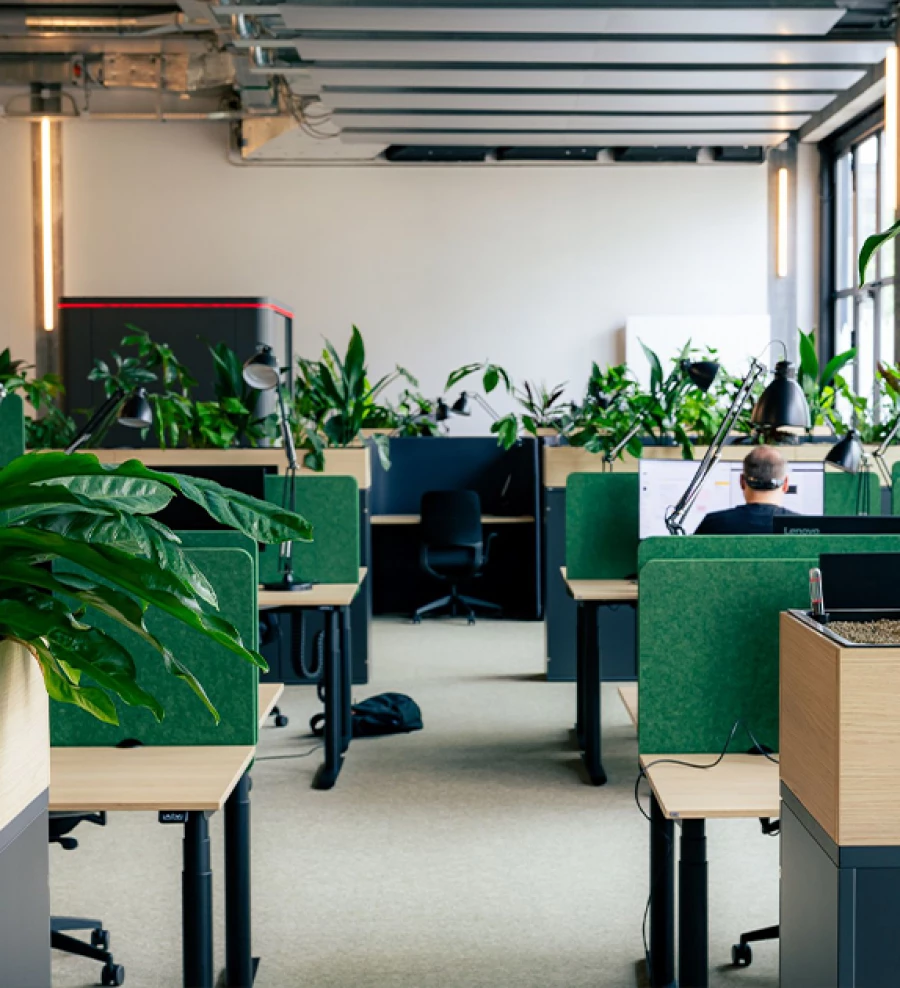Are you tired of feeling like you’re working in a concert hall instead of an office? The constant chatter and clatter can not only disrupt your focus, but it can also take a toll on your mental and physical health. But don’t worry, at AcoustiQ, we’re here to help you turn your noisy office into a serene work sanctuary. As industry leaders in soundproofing solutions, we’ve got the expertise and experience to silence even the most persistent pen-clicking colleague. So, sit back, relax and let us guide you through the ultimate soundproofing journey for your office, after reading this blog, you’ll be able to focus on your work instead of the noise around you.
Why Soundproof the Office?
Sound Advice
Before we dive into our soundproofing guide, let’s clear up a few things. Recording artists and audiophiles may be shaking their heads at our use of the word “soundproofing”. And they have a point. Soundproofing refers to the act of completely removing or deadening all sound in a space. You’ll find soundproofing solutions in areas where you want to control both ambient noise and sound leaking in or out of a room. Think hotel rooms and recording studios. But let’s face it, a completely silent office is just no fun.
In fact, if it’s too quiet, you can quite literally go insane. Scientists from Orfield Labs in Minneapolis developed an anechoic chamber which, at –9 decibels, was crowned by the Guinness Book of World Records as the world’s quietest room. It’s so quiet, that once inside, people can hear the blood pumping around their heads. It’s an unnerving sensation, one that triggers actual hallucinations in people that spend too long inside. And how long is too long? The record for someone inside this completely soundproofed room is just 45 minutes.
What we’re talking about is sound absorption or acoustic treatment – in other words, methods to dampen and deaden sound within a room. For simplicity, we will use the terms “soundproofing” and “sound absorption” interchangeably – but just know that we understand the difference.
Now, when it comes to acoustic treatment, it’s not just a matter of slapping a few foam tiles on the wall; we need to understand how sound waves travel to keep the noise down.
So Loud that it Hertz
If you’ve ever belted out your favourite songs in the shower, you know that it’s one of the few places in the world where you sound like a rockstar. Unfortunately, that’s not because of your undiscovered talent but due to your bathroom’s unique acoustics. But what makes a bathroom so special?
Well, for starters, soundwaves love smooth, hard surfaces. Just like how soundwaves bounce back, reflecting your voice when you sing in the shower, creating that beautiful reverb effect. But these soundwaves don’t always bounce directly back to your ears, they can continue bouncing from walls to ceiling to floor, creating a persistent hum known as reverberation.
But wait, what’s the difference between reverb and echo, you ask? They’re both audio phenomena caused by bouncing soundwaves, but with vastly different speeds. Reverb is a real-time “hum” caused by reflections on surfaces at a close range, while echoes are delayed pulses of sound bouncing off hard objects far away.
Now, when it comes to your office, you’re probably experiencing both echoes and reverberations on a daily basis. From the loud sales calls coming from two cubicles away, to the sounds of the coffee machine in the break room firing up, all this background noise can be a real productivity killer. How loud it is depends on how the office is designed and what acoustic treatments have been implemented.
So, in this section we’ll explore some practical acoustic treatment options that will help you silence the chaos and create a more productive work environment.
Self-Absorbed
Ever wish you could put your colleague’s loud chatter in a Cone of Silence? Well, while a Qzone phone booth may work, there is another simple solution: carpet. That is right, the OG of low-budget recording studios is also the solution to your office noise problems. It is soft, irregular, and porous nature makes it the perfect sound absorber.
But why does carpet work so well? It’s all about the soundwaves. Unlike hard surfaces like tiles that send soundwaves bouncing back, carpet traps them in its plush pile, slowly dampening the noise.
But don’t just stop at carpet, other sound-absorbing materials include mineral wool, insulation blankets, and certain forms of foam plastic. But remember, some sound is still reflected, so don’t expect a mattress to soundproof your office (although it might make for a comfortable nap spot). These porous sound absorbers are most effective for mid-range frequencies or treble tones, but less so for lower frequencies and bass. So, if you have a colleague who blasts electronic dance music all day, you might need a more robust solution.
To deal with those bass-heavy sounds and lower frequencies, you’ll need to make use of materials that both absorb and diffuse sound waves. But don’t worry, we’ve got you covered with the ultimate guide to soundproofing your office. Say goodbye to the chaos, and hello to peace and quiet.
Diffuse with Caution
Sound diffusion is like spreading butter on your toast, it makes sure the sound is evenly distributed throughout the room. This can be achieved by using diffusers, acoustic diffusers, wood sound diffusers, audio diffusers, or sound diffuser panels. These work by using irregular surfaces to prevent soundwaves from bouncing straight back at you. Plus, most diffusers have a hollow, air-filled core that captures soundwaves, making your office sound like a concert hall.
Optimal Acoustic Treatment Placement
When it comes to placing these soundproofing materials, it’s all about intercepting the most amount of audio reflections. Common placements include the ceiling above a person or audio source, foam bass traps in wall corners, and mirrored diffuser panels on each wall.
Wall-Mounted Acoustic Panels
To achieve optimal soundproofing, it’s important to pay attention to the design and materials used in these solutions. In most corporate office spaces, privacy screens, cubicles, partitions, and dividers make up the bulk of acoustic treatment. These act to absorb and diffuse sound within smaller areas of the larger room.
But be careful, hollow partition screens can cause a metallic hum when soundwaves travel along the metal brackets. And poorly secured panels or paired diffusers that don’t sit on mirrored points can cause audio superposition or “loud spots” in certain parts of the room.
In short, planning and placing acoustic treatment in your office should always be done by a professional. At AcoustiQ, we’re an industry leader in corporate soundproofing. So, if you’re tired of your co-workers listening in on your conversations, or the sound of your neighbour slurping two-minute noodles is driving you insane, get in touch and let’s work together to create a peaceful work environment.



